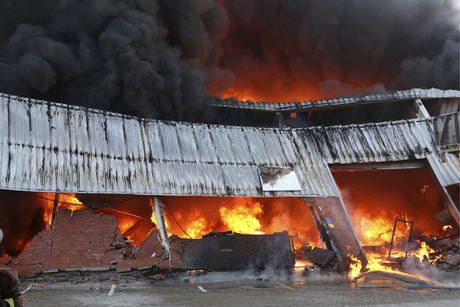7 fire safety recommendations for manufacturing facilities

As manufacturers undertake rationalisation programs and centralise procurement services, the conversation around fire protection for the manufacturing sector is changing.
“As part of a centralised approach, the management of fire safety processes and systems is shifting. Category managers are overseeing the appointment and management of a fire protection provider, while plant managers are responsible for the day-to-day supervision of fire safety procedures on site,” said Bill Adamopoulos from fire protection specialist Wormald.
“Fire protection is a shared responsibility and it is vital that all those involved in fire safety at manufacturing plants understand and invest in adequate fire protection solutions,” said Adamopoulos.
A fire incident can result in significant staff injuries, fatalities and costly damage that may mean the end of a business. Machines that are custom built may take months or even years to rebuild, resulting in significant downtime and lost revenues.
Wormald has developed seven fire safety recommendations for manufacturing facilities:
- Establish responsibility for fire safety. Generally, under Workplace Health and Safety (WHS) legislation, officers must ensure that the business meets its WHS obligations and can be held personally liable for failing to do so. It is important that clear systems are established for the management of fire safety, including exercising due diligence to ensure appropriate policies, procedures, safety practices and resources are in place. If responsibility is shared, the parameters for each manager should be clearly communicated and defined.
- Understand legislative and regulatory requirements. Fire safety is heavily regulated and it is the responsibility of every manufacturer to comply with appropriate legislation and Australian Standards. The national building code, Australian Standards and the principal set of WHS regulations in each state and territory legislation governing the maintenance of fire protection systems are central to fire safety. Typically, these documents stipulate that the person in control of a workplace, business or undertaking is responsible for ensuring that fire and explosion risks are minimised, appropriate fire protection is available and regular maintenance is conducted.
- Conduct a thorough risk assessment. A detailed understanding of fire risks and hazards can help to minimise fire and explosion risks and identify a suitable fire protection solution. The most common fire risks in manufacturing are machinery, stock or parts stored on-site or in warehouses and the manufacturing process (for example, the use of heat or hazardous gases).
- Install an adequate fire protection solution. A range of fire protection solutions is available for manufacturing sites, including basic fire extinguishers, water spray deluge systems, gas systems and foam systems. It is important to install a solution that meets the specific requirements of the site. When deciding on a solution, some key considerations include the materials being used, size of the site, number of staff and legislative, regulatory and any insurance requirements that apply to the manufacturer’s particular circumstances.
- Regularly audit, inspect and maintain fire protection equipment. A high level of reliability is essential when it comes to fire protection. Fire protection systems and equipment should perform to the standard to which they were originally designed and installed. Regular testing can validate the functionality of the systems and equipment and help to uncover any faults or issues that may cause malfunction. Australian Standard AS1851 - ‘Maintenance of fire protection systems and equipment’ recommends that fire protection systems be regularly tested, serviced and maintained.
- Regularly revisit training and emergency response processes. A confident team that is able to respond appropriately in the event of a fire is an invaluable investment and can substantially reduce the impact of a crisis. Emergency evacuation procedures should be regularly reviewed, and everyone working in a manufacturing facility should be trained on how to respond appropriately to a fire incident and use fire protection equipment correctly. This includes briefing new employees and regularly conducting refresher training for existing staff.
- Choose a fire protection provider carefully. Time is the biggest challenge facing manufacturers when it comes to fire safety. It can be difficult to find time to focus on fire protection and, as a result, it can often be overlooked. Outsourcing fire protection to a reputable provider can help to ensure compliance requirements are met and changes in legislation are closely monitored. The Fire Protection Association of Australia’s Providers of Choice are required to comply with strict codes of practice and insurance requirements.
Talk from the top with Dr Sandra Cuthbert
In this article, we takes a look at a day in the life of the FSANZ CEO, Dr Sandra Cuthbert, and...
Modest growth predicted for global dairy market
For Australia, dairy farm margins will likely benefit from improving farmgate prices in 2025...
The impact of global warming on food security
Researchers from Aalto University have developed a more precise model of where and how warming...














